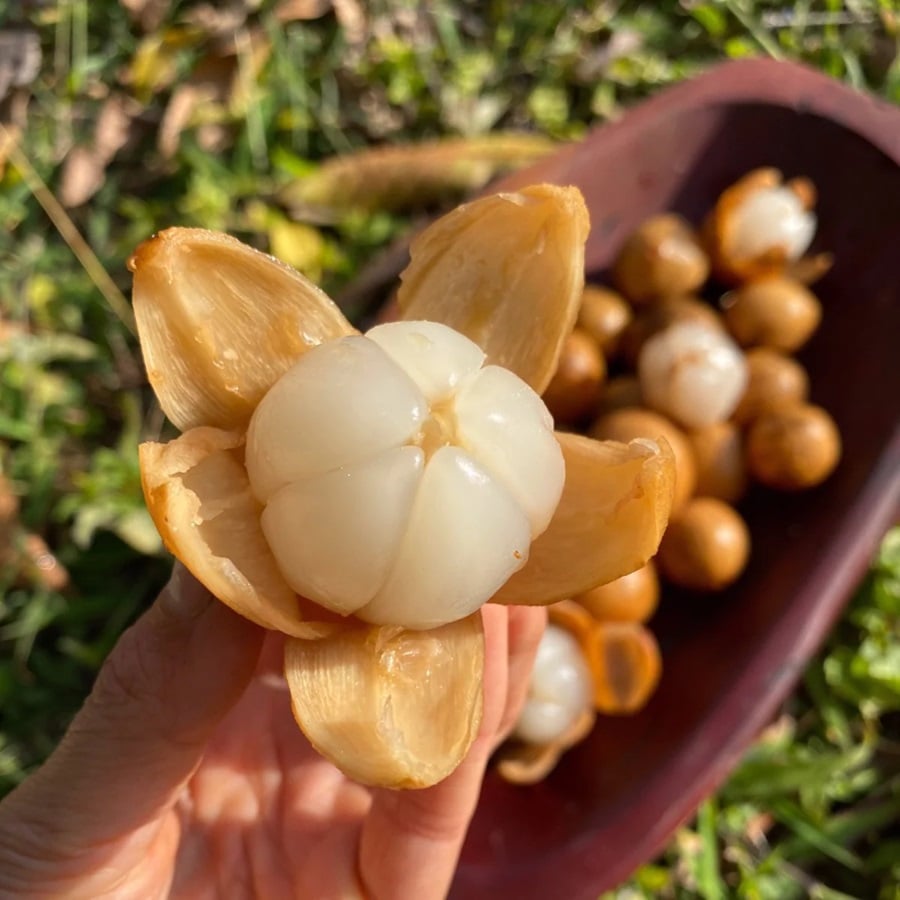
The Vietnamese bon bon fruit, known locally as "bòn bon," is a delightful embodiment of the country's rich agricultural tapestry. Amidst the diverse array of tropical Vietnamese fruits, bon bon stands out with its unique combination of aromatic sweetness and subtle tanginess. In this article, we will delve into its benefits, recipes, and prices.
1. What is Vietnamese bon bon?
Vietnam is renowned for being a veritable paradise of tropical fruits, where lush orchards yield an abundance of succulent offerings that tantalize the taste buds. Among these treasures is the Vietnamese bon bon fruit, scientifically known as lansium domesticum and also commonly known as langsat.
Characterized by a delightful combination of sweet and mildly sour notes, the bon bon fruit holds a special place in Vietnamese culture. Legend has it that it played a pivotal role in saving the army of a feudal lord from hunger and thirst, leading to the local reverence for the bon bon tree. The bon bon fruit is typically harvested in September and October. It is most popularly grown in Tien Phuoc District of Quang Nam Province.
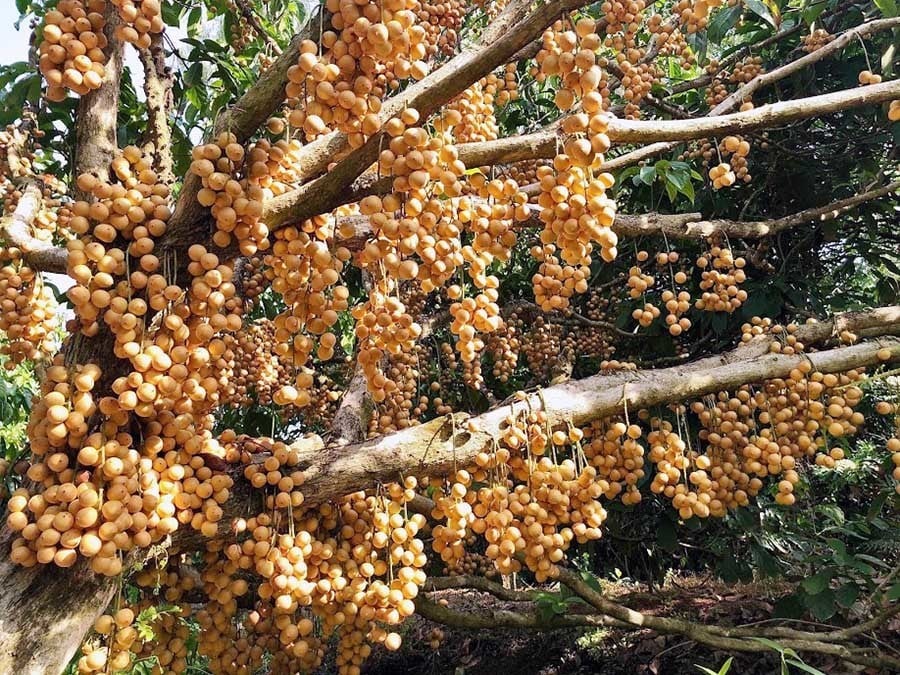
2. Is Vietnamese bon bon good for health?
The bon bon fruit is rich in essential nutrients such as protein, carbohydrates, minerals, vitamins, and dietary fiber. Particularly, it is high in vitamin A, B1, and B2, which are crucial for various bodily functions. In 100 grams of bon bon, there is:
- Protein: 0.8 g
- Starch: 9.5 g
- Dietary fiber: 2.3 g
- Calcium: 20 mg
- Phosphorus: 30 mg
- Vitamin A: 13 IU
- Thiamine: 89 mcg
- Riboflavin: 124 mg
- Ascorbic acid: 1 mg
The bon bon fruit is known for its numerous outstanding health benefits:
- Enhanced red blood cell production: The bon bon fruit is rich in essential vitamins such as B1 and B2, providing 8-11% of their recommended daily intake for adults. Vitamin B2 plays a crucial role in metabolism, nerve function, and red blood cell production.
- Cellular damage prevention: The bon bon fruit contains powerful antioxidants that help combat free radicals harmful to cells. In addition, it contains limonoids, a substance known to have anti-cancer properties.
- Enhanced teeth and bone health: The bon bon fruit contains vitamin A and phosphorus. Vitamin A plays a crucial role in maintaining teeth and bone health. Phosphorus contributes to strong bones, energy production, and normal bodily function.
- Strengthened digestive system: The bon bon fruit has a high fiber content. Fiber promotes the growth of beneficial bacteria in the intestines, enhancing digestion and nutrient absorption. Moreover, fiber can control blood cholesterol levels, reducing the risk of heart disease.
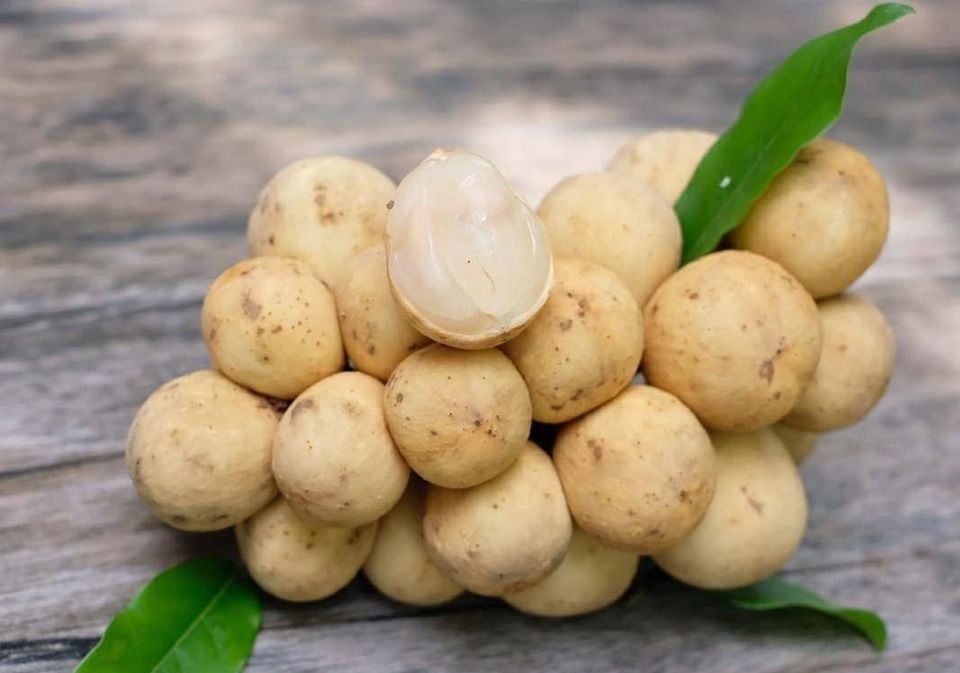
3. Noteworthy health risks of the Vietnamese langsat fruit
Even though the bon bon fruit is known for being good for your health, it is important to be cautious about its peel and seeds. Here are some things to keep in mind:
- The seeds of the bon bon fruit are bitter and can be harmful if swallowed. So, it is best not to chew or swallow the larger seeds.
- The peel of the bon bon fruit contains a substance called lansium acid, which can be toxic. To be safe, when peeling the fruit, use your hands or a knife.
- If you have diabetes, be mindful not to eat too much as it contains a high amount of sugar.
To add the bon bon fruit to your diet, you can enjoy it as a snack or include it in light meals. Just remember to eat it in moderation to avoid putting too much strain on your digestive system.
4. Culinary specialty made from Vietnamese bon bon
Bon bon salad is a specialty known for its delightful flavors. To prepare this dish:
- Start by separating each segment of the bon bon fruit. Press your thumb into the bottom of the fruit to easily peel it and remove the seeds. Avoid peeling from the stem end to keep the thin layer intact.
- Get freshwater shrimp, avoiding sea or farmed shrimp. Roast them until they are fully cooked.
- Mix one tablespoon of fish sauce, two tablespoons of sugar, one tablespoon of lime juice, and finely chopped chili.
- Heat oil with chopped onions and garlic until golden brown. Mix the bon bon fruit and shrimp with the oil and fish sauce mixture.
- Transfer everything to a dish. Sprinkle crushed roasted peanuts, basil, mint, and add sesame seeds on top.
This salad combines the sweet and sour taste of bon bon with the subtle sweetness of shrimp, creating a dish that captures the essence of Vietnam's culinary delights.
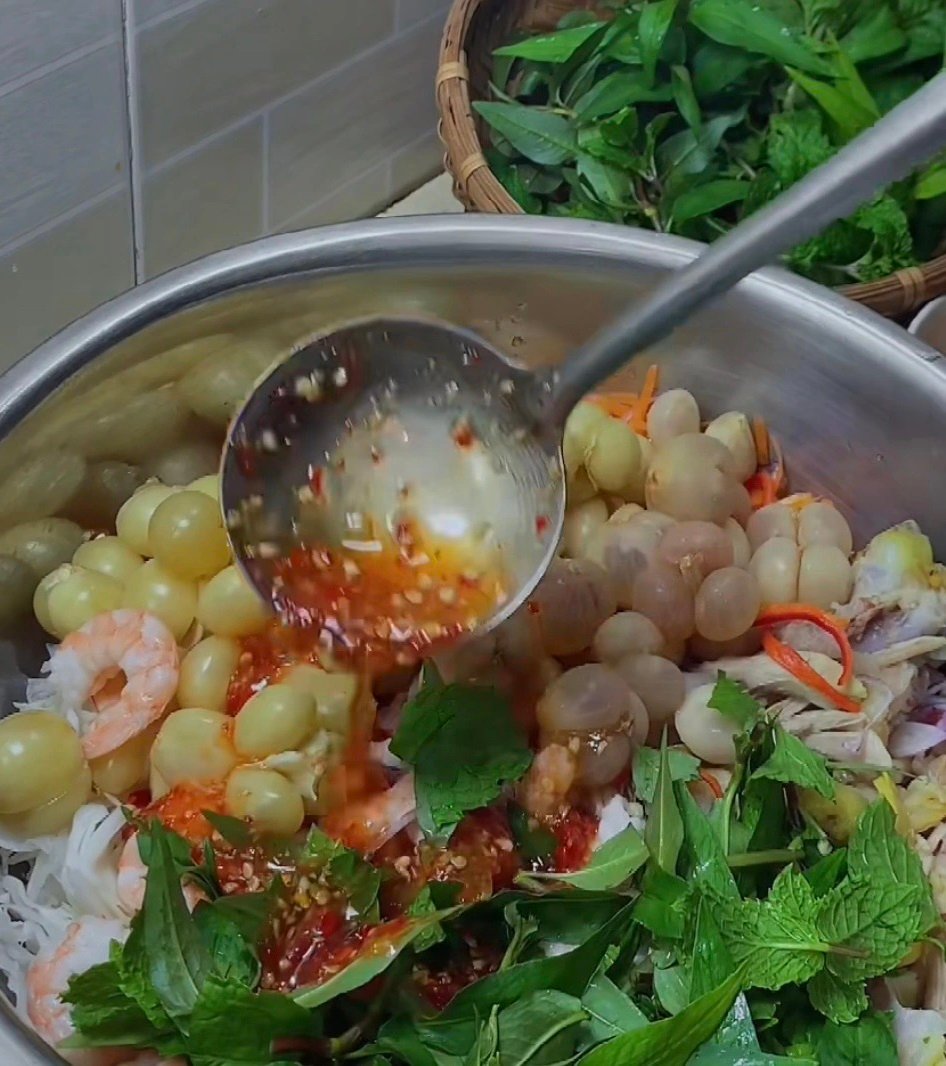
5. Price of the bon bon fruit in markets in Vietnam
You can find Thai bon bon and Vietnamese bon bon at many local markets.
- Thai bon bon: From 65,000 to 70,000 VND per kilogram
- Thai bon bon in some shops and supermarkets cost more.
- Vietnamese bon bon: From 50,000 to 60,000 VND per kilogram
- During the ripe bon bon season, prices may be lower.
Note: These prices are subject to change depending on market conditions and demand.
When choosing bon bon at Vietnamese markets, remember to:
- Observe the size: Choose bon bon with a moderate size. Those approximately the size of a thumb are ideal, indicating natural ripening and a sweet taste. Avoid overly large bon bon as they may have been treated with chemicals, resulting in a less appealing taste and more potential health risks.
- Examine the peel: The outer peel of naturally ripe bon bon may not look visually appealing, often having black spots at the bottom. Natural bon bon, when peeled, won't release excessive white sap.
- Check the stem: The stem of artificially ripened bon bon often appears dark due to the excess sap flow. In contrast, the stem of naturally ripe bon bon remains fresh and green.
- Examine the flesh: If allowed, peel a fruit to check the quality of the flesh inside. Naturally ripe bon bon will have translucent flesh, with segments sticking firmly together. It will have a sweet, slightly tangy taste. On the other hand, artificially ripened bon bon may have cloudy, opaque flesh. When tasted, it tends to be less sweet and somewhat acidic.
- Check the seeds: Fully ripe bon bon will have black seeds, while artificially ripened or unripe bon bon may have white or slightly pinkish seeds.
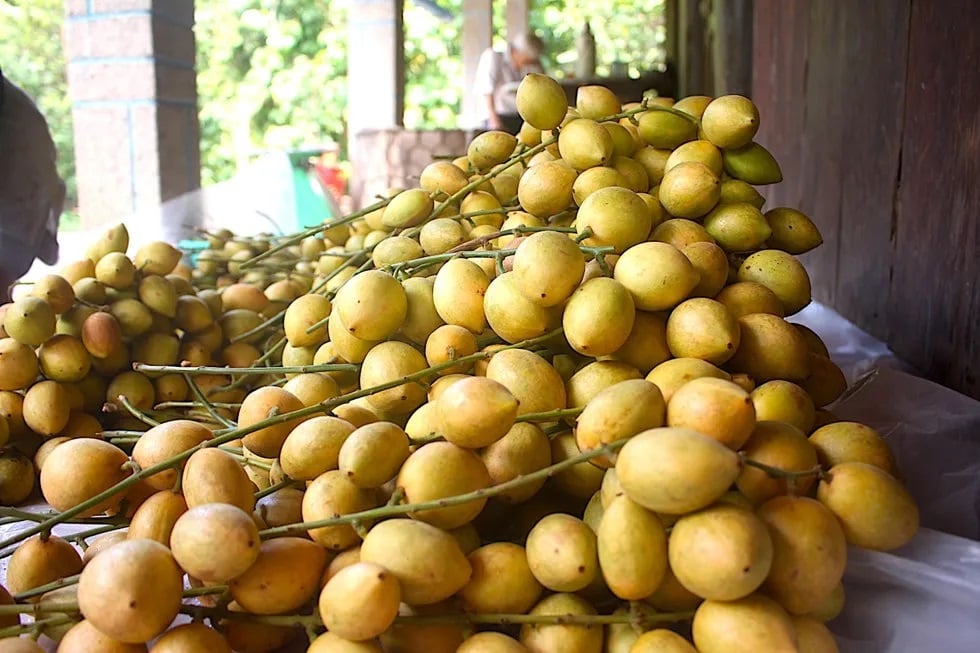
The Vietnamese bon bon fruit not only captivates the senses with its delectable flavors but also carries with it a cultural and culinary significance that adds depth to the nation's agricultural heritage. Whether enjoyed fresh or incorporated into delightful dishes, the bon bon fruit remains a cherished part of Vietnam's gastronomic journey. If you have the chance to visit Vietnam, make sure you give it a try.
Besides bon bon, there are many other fruits you should try while visiting Vietnam’s top destinations, such as Hanoi, Ho Chi Minh City, Phu Quoc, Nha Trang, Hoi An, and Ha Long. Some fruits that you should definitely not miss out on are Vietnamese mango, Vietnamese avocado, Vietnamese guava, Vietnamese white dragon fruit, Vietnamese apple, Vietnamese banana, etc.
To complement your Vietnam travel, stay at Vinpearl’s hotels and resorts. Vinpearl offers luxurious rooms and world-class amenities, including swimming pools, spas, gyms, restaurants, and bars. From Vinpearl, you can also easily check out VinWonders for diverse entertainment options. At VinWonders, you can go on thrilling rides, watch lively shows, buy unique souvenirs, and more.

>>> Book rooms in Vinpearl Phu Quoc, Vinpearl Nha Trang, Vinpearl Resort & Golf Nam Hoi An, Vinpearl Resort & Spa Ha Long for your adventures in Vietnam!
























